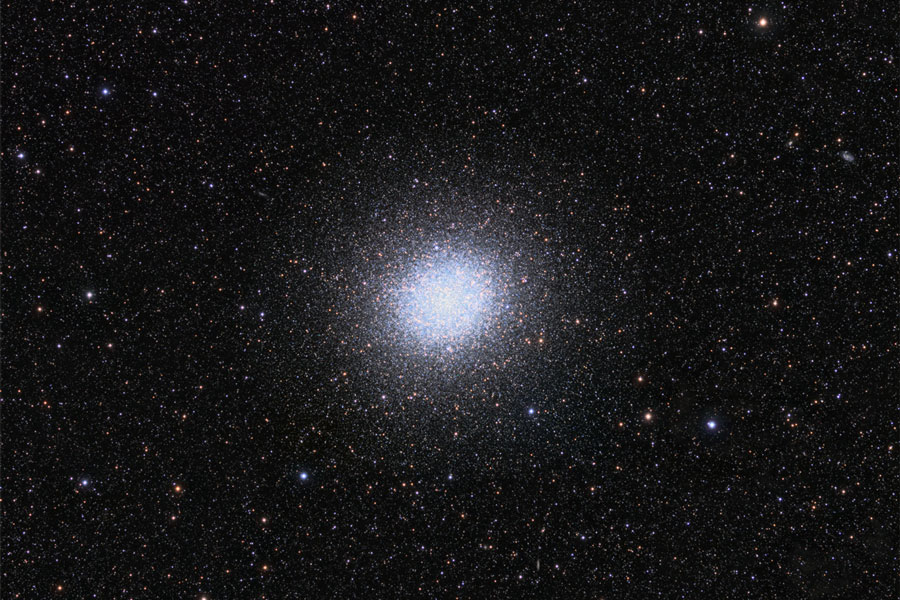Due to the lapse in federal government funding, NASA is not updating this website. We sincerely regret this inconvenience.
Astronomy Picture of the Day
Discover the cosmos!
Each day a different image or photograph of our fascinating universe is
featured, along with a brief explanation written by a professional astronomer.
2009 March 1

Omega Centauri: The Largest Nearby Globular Cluster
Credit & Copyright:
Thomas V. Davis
(tvdavisastropix.com)
Explanation:
This huge ball of stars predates our Sun.
Long before humankind evolved, before
dinosaurs roamed,
and even before our Earth existed, ancient globs of
stars condensed and orbited a young
Milky Way Galaxy.
Of the
200 or so
globular clusters that survive today,
Omega Centauri is the largest, containing over ten million stars.
Omega Centauri is also the
brightest globular cluster, at
apparent
visual magnitude 3.9 it is visible to
southern observers with the unaided eye.
Cataloged as NGC 5139,
Omega Centauri is about 18,000
light-years away and 150 light-years in diameter.
Unlike many other
globular clusters,
the stars in
Omega Centauri
show several different ages and trace chemical abundances,
indicating that the
globular star cluster has a complex history over its 12 billion year age.
Tomorrow's picture: earth grazer
<
| Archive
| Index
| Search
| Calendar
| RSS
| Education
| About APOD
| Discuss
| >
Authors & editors:
Robert Nemiroff
(MTU) &
Jerry Bonnell (UMCP)
NASA Official: Phillip Newman
Specific rights apply.
NASA Web
Privacy Policy and Important Notices
A service of:
ASD at
NASA /
GSFC
& Michigan Tech. U.
